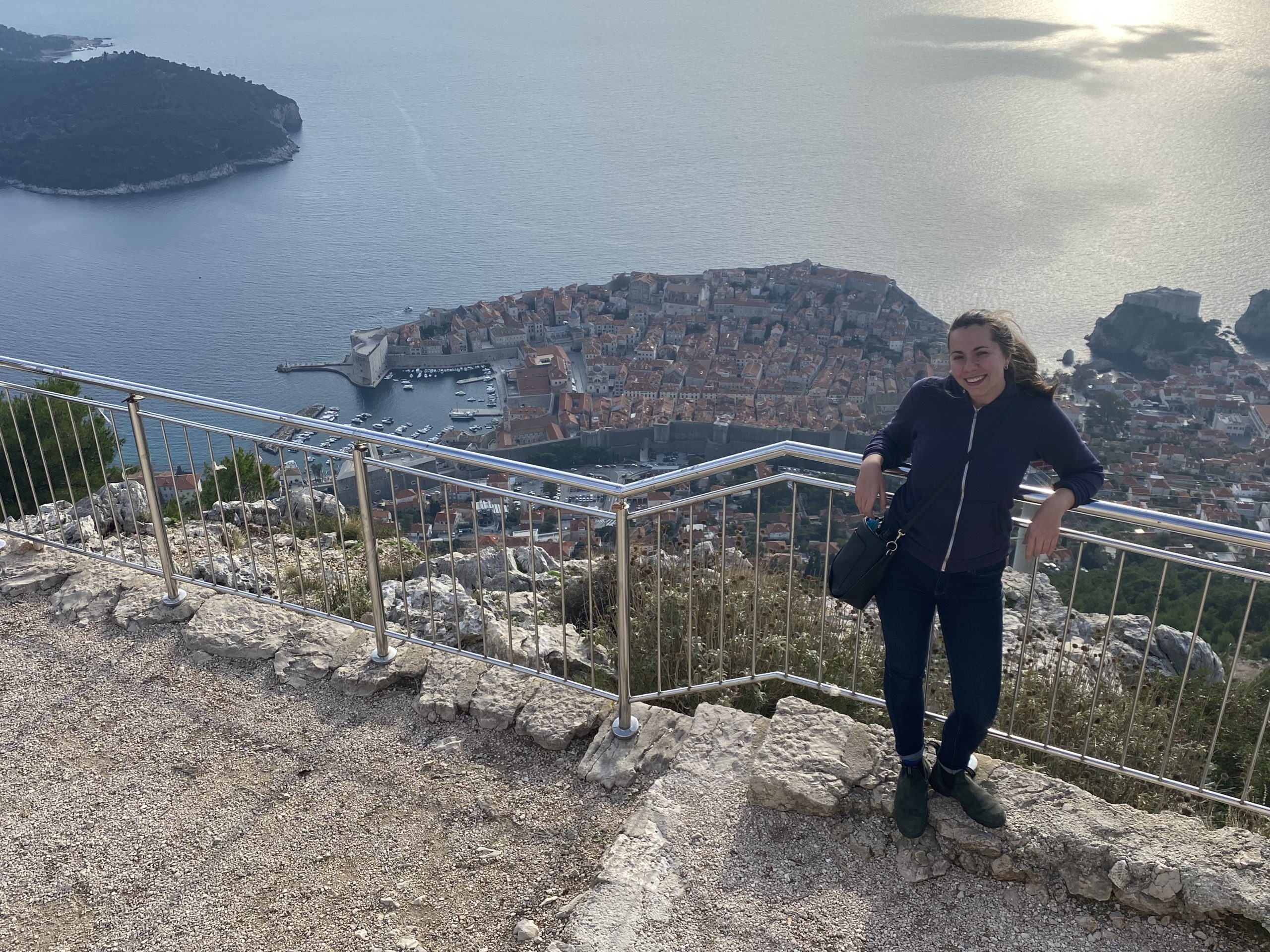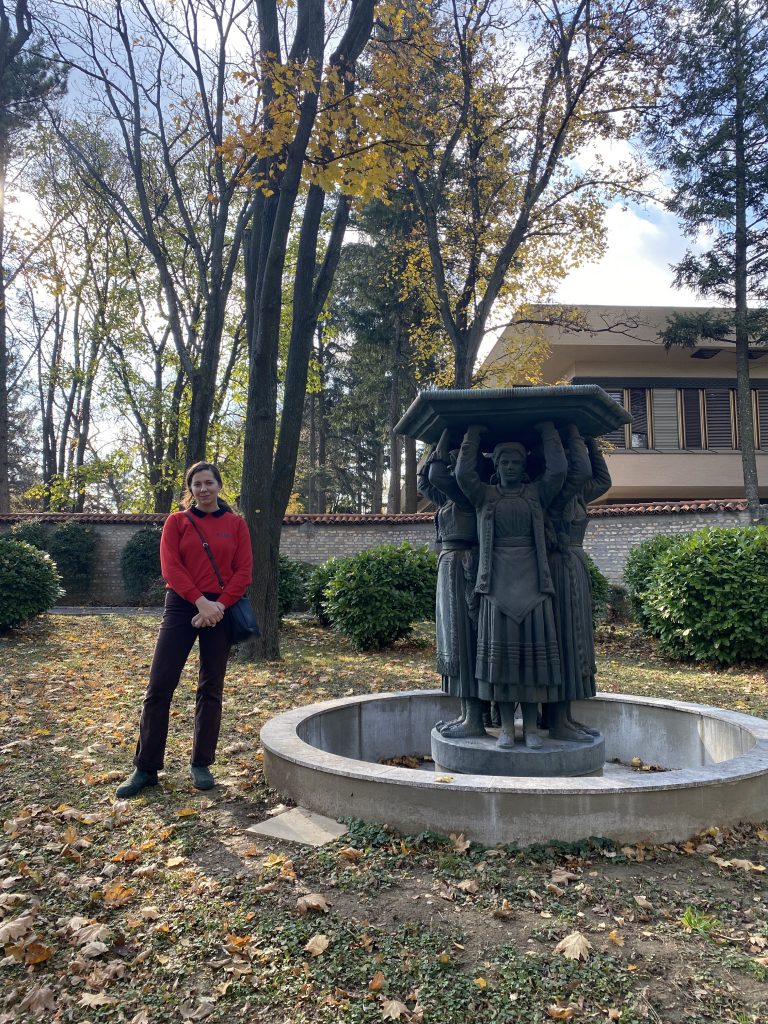*Editor’s Note: This piece was originally posted by the UMN Human Rights Program. Click here to read the original post.
In Serbia, since the wars accompanying the breakup of Yugoslavia ended in 2001, another battle has been waged over representations of that violence. Competing interpretations are advanced by state and non-state groups over what happened and who is to blame. This battle can result in denial of genocide and other atrocities, which causes pain for survivors and victims and can enhance risk of future violence. While some research has been conducted on this process, gender has been under-researched as an important corresponding dimension. Women have unique experiences and memories of war and violence which may not be included in dominant narratives. In Serbia, women anti-war activists like Women in Black have been leading efforts for genocide acknowledgment and post-conflict reconciliation between opposing ethnic groups. In collaboration with Professor Joachim Savelsberg and thanks to the generous support of the Human Rights Initiative, we are exploring the role of women in the cultural processing of the Yugoslav wars in Serbia.

I was born in Yugoslavia, that country that no longer exists, and my family immigrated to the U.S. in 1995 during the wars. Since then, I have been asking questions about the links between my personal experiences and the broader forces at work in post-conflict societies, which eventually led me to pursue my PhD in Sociology at the University of Minnesota. My research focuses on the relationships between gender, activism, and collective memory of mass violence and genocide.
Here at UMN I collaborate closely with a community of scholars of mass violence and collective memory such as Alejandro Baer and Joachim Savelsberg, the Center for Holocaust and Genocide Studies, and the Human Rights Program. In my first year of graduate school, I was invited to collaborate with Joachim Savelsberg on a project about gender and collective memory in Serbia, which was gratefully funded by the HRI. This funding allowed me to travel to Serbia in fall 2021 and conduct four months of fieldwork through the project “History in Whose Hands? Gendering the Collective Memory of Perpetrators in Serbia.”
Our project asks about the role of Serbian women in constructing collective memory of the Yugoslav wars. What role do women play in the cultural processing of past mass violence, specifically as members of the “perpetrator people” of that violence? We focused on Serbian women who are part of an organization dedicated to memory issues (Women in Black) and another group of women who are not organized and must process (or avoid) the past in their everyday interactions. We also decided to recruit a small group of six men to conduct comparative interviews, which validated our expectations that there are significant gender differences in collective memory construction in Serbia. I conducted four focus groups, 47 in-depth individual interviews, and ethnographic observations with activists in Serbia and we are now processing these data, analyzing it, and writing up our findings to submit for publication.
This project has greatly contributed to my academic and professional development. I had the opportunity to collaborate with Professor Savelsberg on every stage of the project, thereby gaining skills in proposal development, development of research instruments, and conducting fieldwork in Serbia. I am now involved in processing, analyzing, and writing up the data, which will result in co-authored presentations and publications. Finally, the data collected in Serbia will contribute importantly to the empirical foundation of my doctoral dissertation on gender, feminist activism, and collective memory of the Yugoslav wars in Serbia.
In addition to the personal and professional benefits, this research has already and will continue to help build academic and practical knowledge in the field of human rights. Though we are still in the data processing and analysis stage and have not yet reached final conclusions about our findings, preliminary analysis demonstrates clear connections between gender and collective memory of the Yugoslav wars in Serbia. The two key dimensions of the relationship are: 1) gendered inequality in access to and participation in collective memory processes, and 2) the nature of the narratives that women and feminist activists interviewed articulate, which are more inclusive, empathetic, and peaceful than the nationalist narratives of the Serbian men interviewed and the Serbian government.
For example, in terms of the first dimension of inequality in participation in collective memory processes, the men interviewed shared that they speak openly and often about the wars in male-dominated spaces such as pubs, social clubs, and public squares. In contrast, almost none of the non-activist women interviewed said that they ever speak about the wars, not even in their families or friendship circles. The wars are seen as a men’s topic, with women having nothing to contribute. When I told men I was speaking to women about the wars, they were astonished and dismayed, saying things like, “Well what are you asking them for!”
In contrast to the lack of participation among non-activist women, the activists of Women in Black and other groups defy these expectations in speaking out against the wars and the ongoing denial in Serbian society, and they are vilified for their activities. They are ostracized, rejected, and attacked partially because, through engaging in their activism, they are not conforming to the gendered expectations in Serbian society for appropriate behavior for “normal women.” While I was conducting fieldwork in Belgrade, the offices of Women in Black were attacked and defiled twice, needing to be repainted. The graffitied insults are always gendered, calling the women witches and even worse feminized insults.
The personal narratives that men and women (both activist and non-activist) shared about the wars also differed across gendered lines. The men repeated the Serbian government’s nationalistic narrative of Serbian suffering and heroism during the wars. They minimized Serbia’s crimes, denying any collective responsibility for them, and justified Serbian military intervention in the other Yugoslav republics as necessary to defend “our” people and our territories from foreign attackers. In contrast, women expressed empathy for the victims of the other ethnic groups and pain regarding the violence that tore apart their country and continues to breed resentment in Serbian society. Several of them expressed fears as mothers for their children growing up in such a society and being taught to practice hatred and violence towards people of other ethnic groups.
These findings are relevant for academic audiences interested in denial and acknowledgement of genocide and other atrocities and gendered power relations in post-conflict societies. But they are also relevant to human rights practitioners who seek to challenge these harmful denialistic narratives, and who can draw on the more inclusive memory practices exhibited by these women interviewees. I believe that women, their activism, and their memories, have important contributions to make towards post-conflict reconciliation if they are more included in official processes. They inspire me to continue producing research that can hopefully illuminate and advance the important memory work of women and feminist activists in post-war societies.

Nikoleta Sremac is a PhD Student in Sociology and a Research Assistant at the Center for Holocaust and Genocide Studies at the University of Minnesota. She studies gender, social movements, culture, and genocide and mass violence. Her dissertation focuses on gendered memory politics and activism related to the 1990s Yugoslav Wars in Serbia.


Comments